In this series, Tofugu asks Japanese learners what resources and methods they use to study and why. Dan Bornstein is an advanced Japanese learner whose skills and experience helped him create a series of bilingual Japanese reading material (learn more in Dan's bio). Take it away, Dan!
When someone mentions "mastering Japanese," it feels totally unrelated to the language I've been learning for more than ten years. If anything, I consider myself having been mastered by Japanese. It's been a long road. Despite living in Kyoto for four years, working for a Japanese company, and passing JLPT N1, I'm still learning new things each day. No matter how advanced my level of Japanese gets, I still have to remind myself that I'm a perpetual beginner.
Here are the Japanese learning resources and techniques I use in my studies to keep moving in the right direction. Hopefully, some of them will help you do the same.
- Kotobank (and Other Native Japanese Dictionaries)
- Nihongo Bunkei Jiten
- Goo Synonym Dictionary
- TBS News
- Reading Without Skipping a Word
Kotobank (and Other Native Japanese Dictionaries)
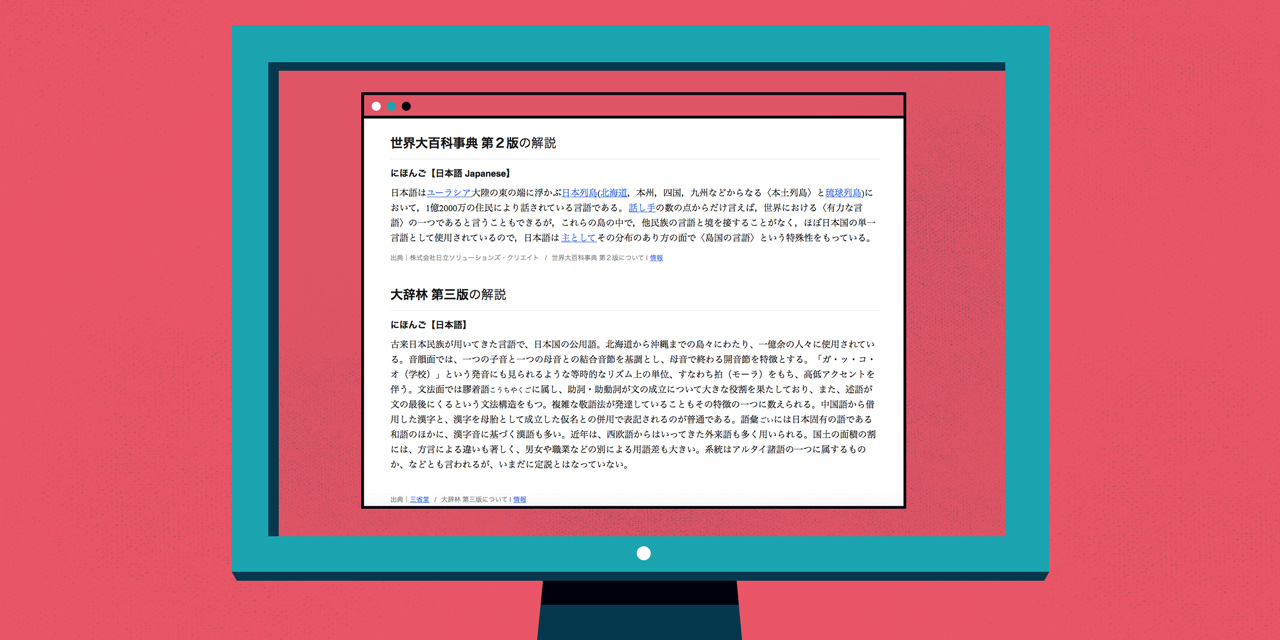
As soon as I was able, I began using Japanese-only dictionaries as my main look-up tool. When definitions are written in Japanese, you have no choice but to look at the words from the only point of view that should matter: that of the native speaker.
There are many options, but my Japanese-only dictionary of choice is Kotobank (コトバンク). I like it because it aggregates multiple Japanese dictionaries, each specializing in different types of vocabulary. It's rare that I don't find what I'm looking for. Compared to Japanese-English (J-E) dictionaries, I can gain much deeper insight, especially when looking up more complex, or culture-specific vocabulary.
Take the verb くれる as an example. The J-E dictionary Jisho.org defines it as "to give; to let one have; to do for one; to be given." This is technically correct, but it doesn't help you understand how this tricky verb is actually used.

When definitions are written in Japanese, you have no choice but to look at the words from the only point of view that should matter: that of the native speaker.
Kotobank's Digital Daijisen (デジタル 大辞泉), however, gives a detailed definition divided into three sections, including a thorough discussion of how くれる functions as an auxiliary verb in the form 〜てくれる. In my opinion, this explanation is not only better than a J-E definition, it's better than most textbook explanations too!
So, when you're able to, I highly recommend you switching to using Japanese-Japanese (J-J) dictionaries. This requires at least an intermediate level of Japanese, but you'll see your language ability improve at a much faster rate. Plus, you'll gain more insight into the meanings of words you won't find anywhere else.
Visit Website: Kotobank
Nihongo Bunkei Jiten
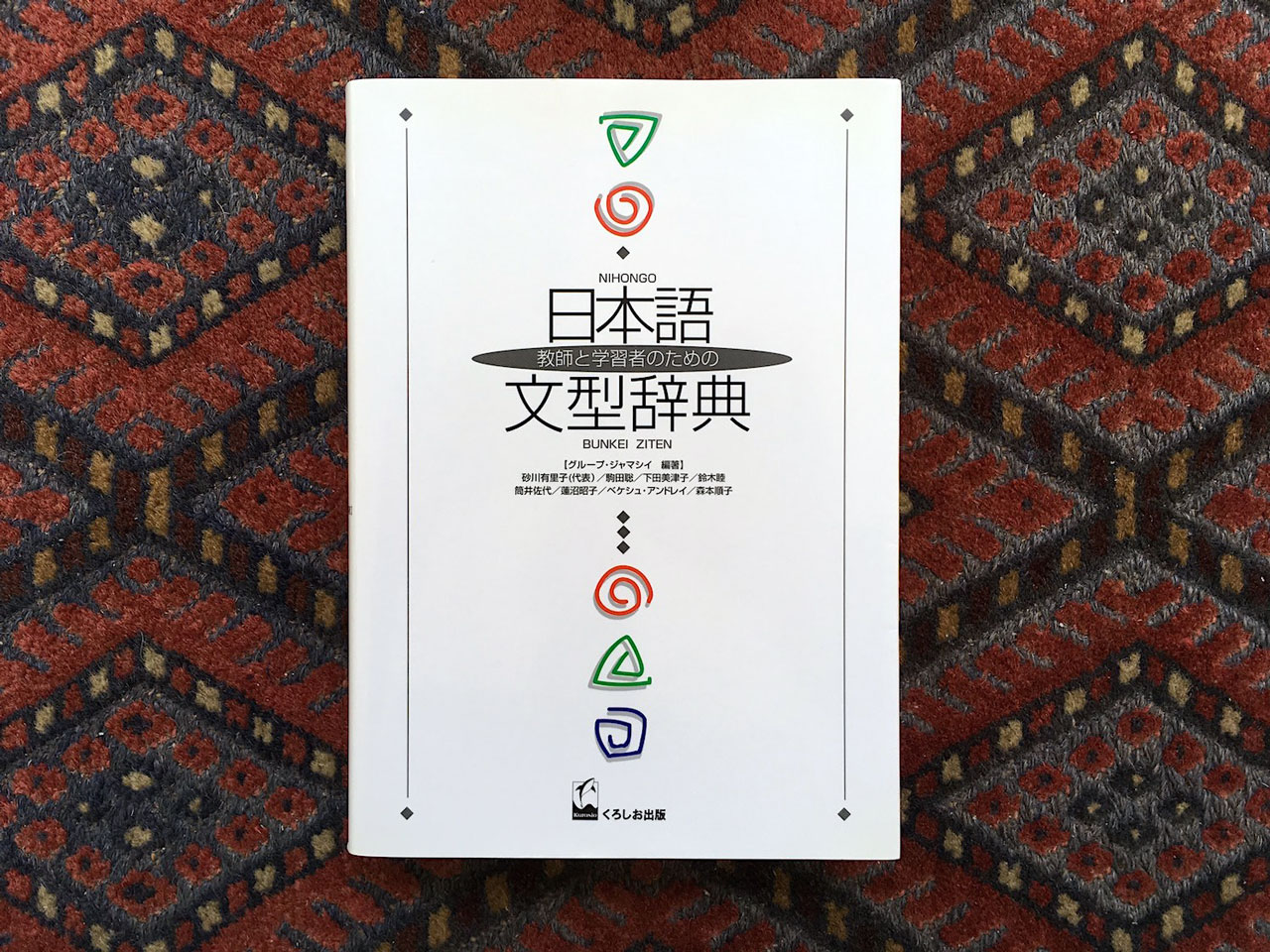
The A Dictionary of Japanese Grammar (DJG) series is excellent. Yet, even these three books don't (and can't) cover everything. Whenever I'm ambushed by tricky grammar, I turn to my dear friend: Nihongo Bunkei Jiten ( 日本語 文型 辞典). I have been using the Japanese-only version, but an English version called A Handbook of Japanese Grammar Patterns for Teachers and Learners was published in 2015. There are also versions of the handbook in Chinese, Korean, Thai, and Vietnamese.
Nihongo Bunkei Jiten has superb explanations and examples, and covers a huge variety of grammar points. Somehow, it manages to squeeze everything into a single volume, unlike the inconveniently-arranged DJG trio. For the most part, I'm always able to find the answer I'm looking for. Rarely do I have to turn to other grammar resources beyond this one.
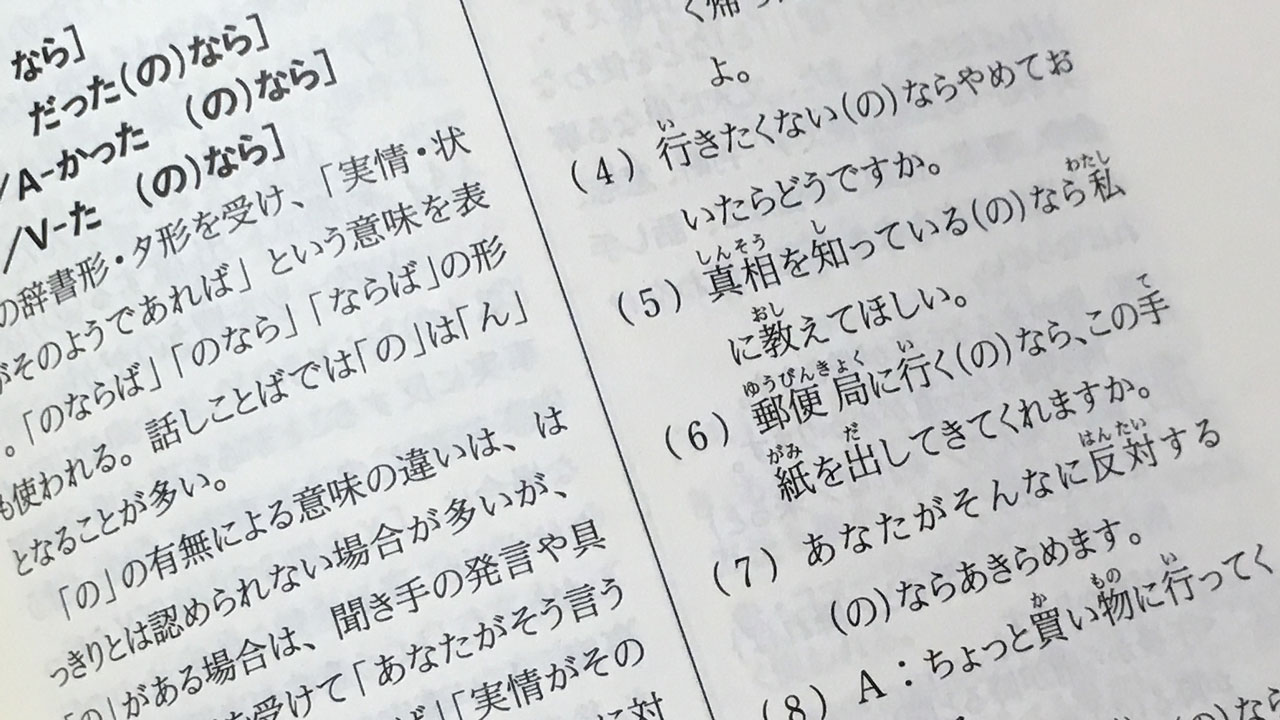
For a comparison, let's look at how Nihongo Bunkei Jiten and the DJG series explain the conditional なら. The Dictionary of Basic Japanese Grammar has one entry for なら, which takes up three and a half pages. The way it's explained has never made much sense to me as a beginner, due to the use of dense, grammatical terms:
"Basically, S nara expresses the speaker's supposition concerning the truth of a present or past fact of the actualization of something in the future."
I understand it now that I have more experience with grammar and the terminology surrounding it, but it didn't help me at all back when I actually needed the explanation.
In contrast, Nihongo Bunkei Jiten has three different entries for なら's separate functions (plus one additional entry for ならいい). These are spread over nine pages packed with thorough descriptions of every possible aspect of なら, including subsections for very specific constructions like 〜たなら, 〜ならべつだが, and 〜ということなら, and about sixty example sentences (DJG has a mere fifteen). Of course, it's not just なら; all other entries in Nihongo Bunkei Jiten have the same level of thoroughness.
Buy this book: Nihongo Bunkei Jiten
Goo Synonym Dictionary
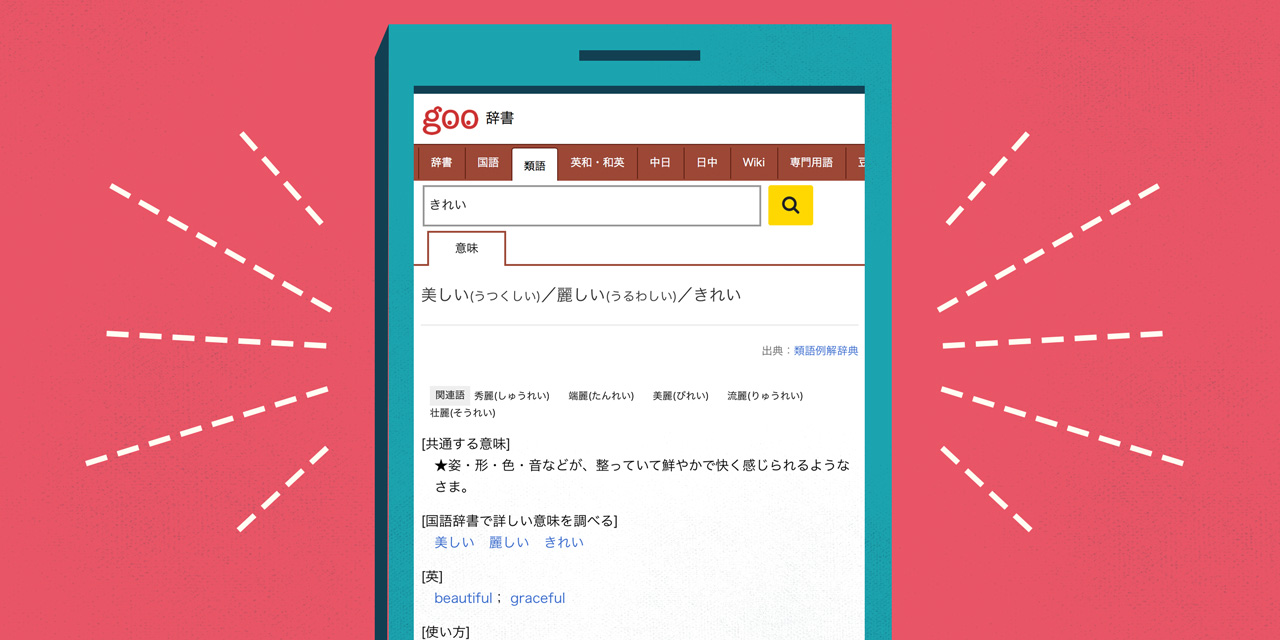
One thing that gave me trouble early on was Japanese synonyms. Even when there were different words in Japanese for one general idea, they got translated into English as if they were all the same. I wanted to know the differences between each of them but, unfortunately, standard Japanese dictionaries (whether native or in other languages) don't help much with synonyms.
If, for example, you look up 美しい in a certain native dictionary, the definition includes the phrase 「きれいである」. Now look up きれい in the same dictionary, and you'll see 「 美しいこと」. The dictionary is basically saying the definition of one word is the other word. This is just fantastic for making your brain run in circles, but not for telling you how these words differ.
To understand each synonym, I use specialized resources that explain when and where each synonym is used. This is called 使い分け – literally "usage distinction." My go-to resource for this is the Goo synonym dictionary ( 類語 辞書).
If you look up the above mentioned words in Goo, you'll learn 美しい has a more generalized sense of "beautiful" than きれい, but きれい is the one that is more frequently used in the spoken language. Second, 美しい can be used for people's manners and behavior, while きれい cannot. Finally, きれい has a specific connotation of neatness that 美しい doesn't suggest. These observations are accompanied by example sentences that show how they apply in context.
Visit Website: Goo Synonym Dictionary
TBS News
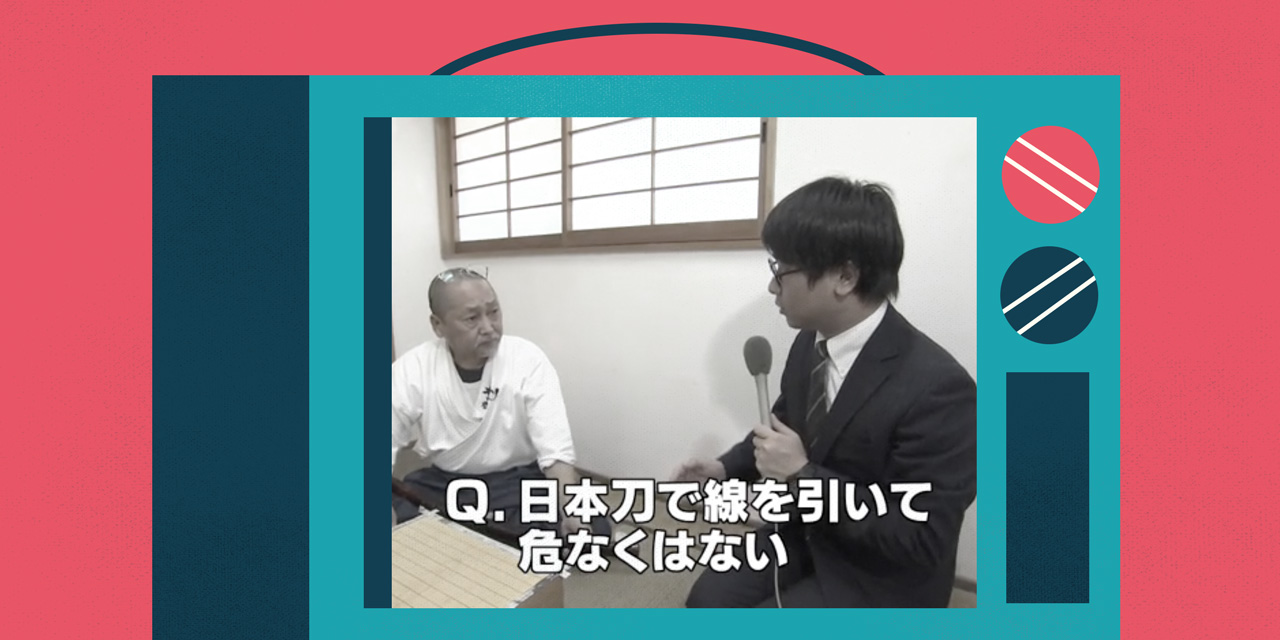
I'm not a TV person. But in Japan, the place I rented happened to include a TV set – and that turned out to be one of the most effective study tools I ever had. It was the only thing that finally managed to bring my listening skill up to speed with my reading ability.
The thing about Japanese TV is it is often subtitled in Japanese, and the text in the subtitles are extremely faithful to the spoken original. No attempt is made to make things sound more "correct" or "respectable." It's all written out just as it was said, with only the occasional minor change. If you can read Japanese fairly well, your eyes will understand the words your ears couldn't pick up, which helps you get used to recognizing them when spoken.
Living outside Japan now, though, means this tool is not readily available to me. Finding other listening materials where current Japanese is spoken with matching transcripts is surprisingly difficult, but one website that can take the place of subtitled live television is TBS News. It's often updated with new materials, and unlike most other Japanese news websites, the videos here are accompanied by texts that replicate everything said in the soundtrack. This gives you the same benefit as watching subtitled television. Unfortunately, it is limited to daily news, but beggars can't be choosers.
Watch: TBS News
Reading Without Skipping a Word
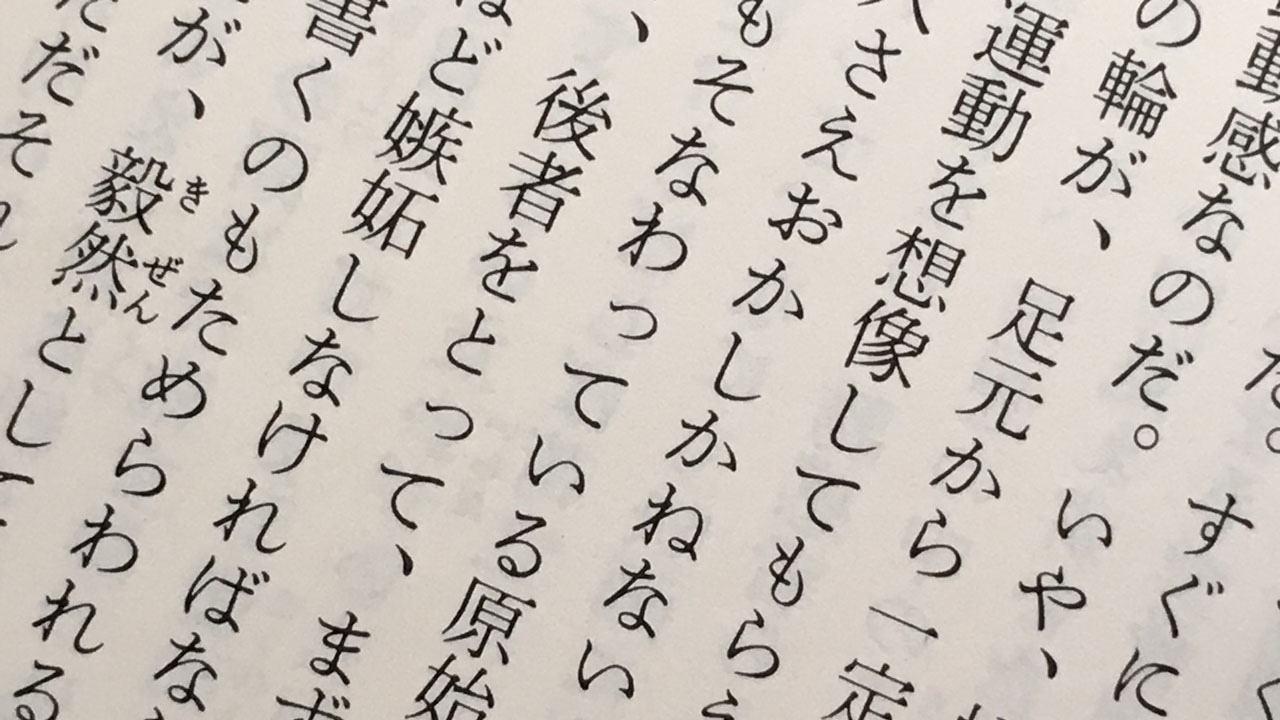
Reading is the most important thing I've done (and am still doing!) to improve my Japanese proficiency. It brought me to my current level, and it keeps my skills from taking a step back while I live outside of Japan.
Personally, I enjoy literature from the late 19th century through the prewar period. I prefer shorter works like stories, diaries, and essays. These shorter lengths are my personal preference as a reader in general, but they also make Japanese learning much more user-friendly compared to tackling huge novels. Of course, you should just choose to read material you enjoy to keep yourself motivated to practice.
One key point about written Japanese is it's on a whole other level of difficulty compared to normal day-to-day spoken language, so I made a rule for myself: I must completely understand every single thing in every single sentence before moving on. If there's even the slightest doubt, I have to stop reading until I've figured it out.
I must completely understand every single thing in every single sentence before moving on.
In my first few years as a reader, this meant it could take me more than an hour to read one short paragraph, or even a single sentence. It wasn't a very fun way to read books, to say the least. But to me, this was the only way I was ever going to become a reader who actually understood Japanese accurately. Looking back, it was one of the best rules I made for myself.
These days, I can technically read most texts and get the gist of them without relying on a dictionary. But when I do that, I know I'm cheating myself. I can see my past self looking at me, his puppy dog eyes tell me I've failed him. I then sit down, and read the right way, taking my time to make sure no word is left unclear. After all, that's what a perpetual beginner should do.
If you are an advanced learner of Japanese, I hope you found a gem or two that you can use in your studies. Of course, these resources are very personal to my study style, so please pick and choose what fits you. The point I want to make in my list is more than the tools themselves: it's the attitude with which you use them.
Do it right, don't take shortcuts, and be the right kind of learner. This way, you'll go a long way no matter what's in your proverbial backpack.
